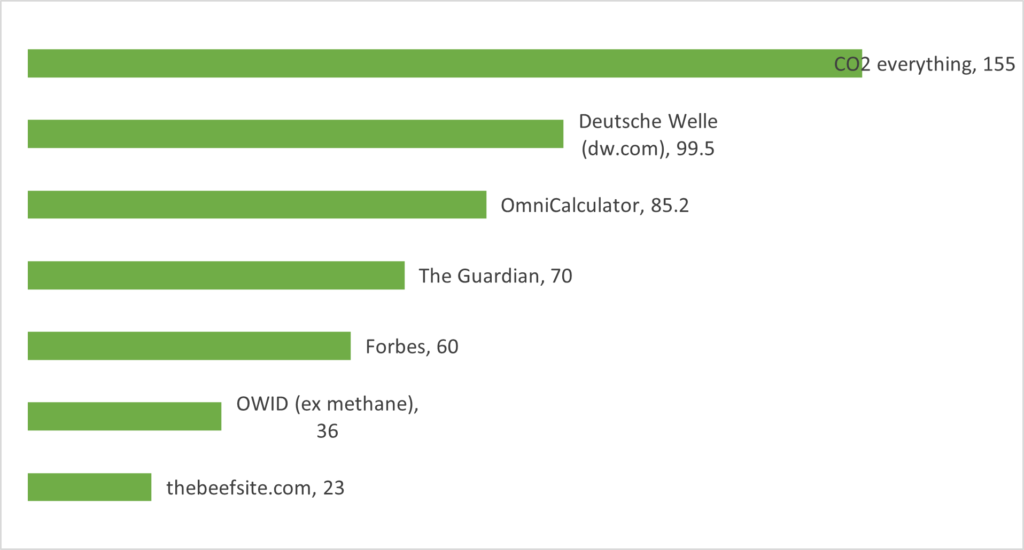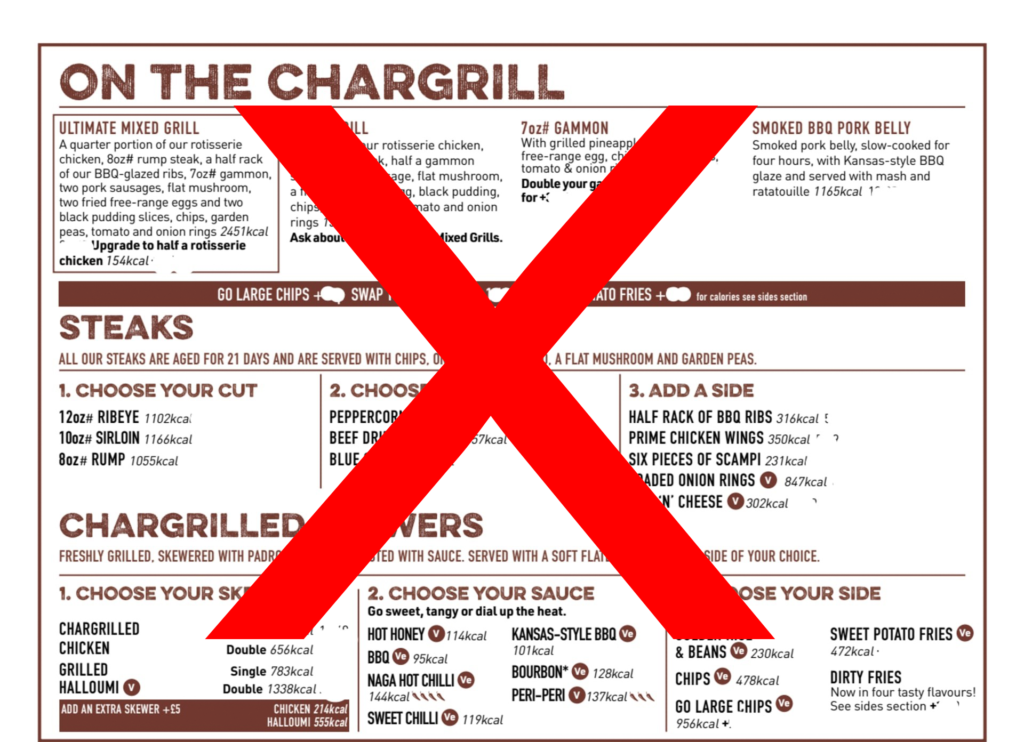Have you got a beef with carbon emissions?

Food systems account for over a third of total global carbon emissions and almost 50% of those emissions occur within the farm gate.
For food & beverage businesses signed up to SBTi or internal targets, this is a significant issue on three counts:
- There is insufficient low carbon produce for companies to meet their targets
- Up to 90% of emissions are in scope 3 but businesses have limited access to supplier farms
- Current footprinting data is averaged with up to 500% variance vs actuals driving poor decision making.
A recent search on Google for ‘what’s the carbon footprint of 1kg beef’ generated a range of results (on page 1) varying from 23 to 155kg CO2e per kg beef.

One area where this is a big issue is beef.
Footprinting software uses industry estimates so imagine they’ve used the high estimate of 155kg CO2e per kg beef i.e. the highest on your menu.
For a restaurant business where up to 90% of emissions are in your supplier base, what do you do?
- Remove all beef dishes – including your best-selling burgers and steak.
- Use different footprinting software to use lower industry averages, or just delay your targets?
- Start an expensive, 5-6 year decarbonisation programme with supplier farmers (if you know them) or buy offsets with the risk of greenwashing?

The big problem:
There is insufficient accurately measured low carbon beef as:
- 70%1 farmers haven’t baselined their farm emissions as there is no incentive.
- Changing farming practices to lower carbon ones carries a risk of reduced yield (revenue).
- Produce does not travel direct from farm to restaurant – there are intermediaries involved.
Now imagine a world where restaurant groups purchase their beef based on emission factor (as well as their existing specifications) with low emission beef more expensive than high emission beef.
- Accurate emissions data allows strategic purchase decisions.
- Higher prices (10-15% premium) for low carbon produce incentivise farmers to decarbonise.
- More farmers decarbonising increases availability of low carbon produce.
An additional benefit of this approach is that this is a huge opportunity to reduce agricultural emissions where the decarbonisation rate needs to increase 8-FOLD to meet NFU net zero targets by 2040.
Agrasta
Agrasta’s Platform as a Service is the go-to location for low carbon beef.
Working with our partners, we complete the gaps in the existing supply chain to allow food businesses to source and track accurately measured low carbon beef to required specifications/practices either through the identification of new suppliers or baselining an existing supplier base and coordinating a decarbonisation programme.
By mapping available data and using machine learning to identify optimal low carbon practices for each type of farm, we maximise yield-to-carbon revenue and generate a tailored roadmap to net zero. This approach has been shown to save farmers between 10-15% in input costs which combined with the 10-15% low carbon premium, offers the commercial incentive that farming has been waiting for.
For more information, visit our website
1Agrasta research, 346 UK farmers, June 2023